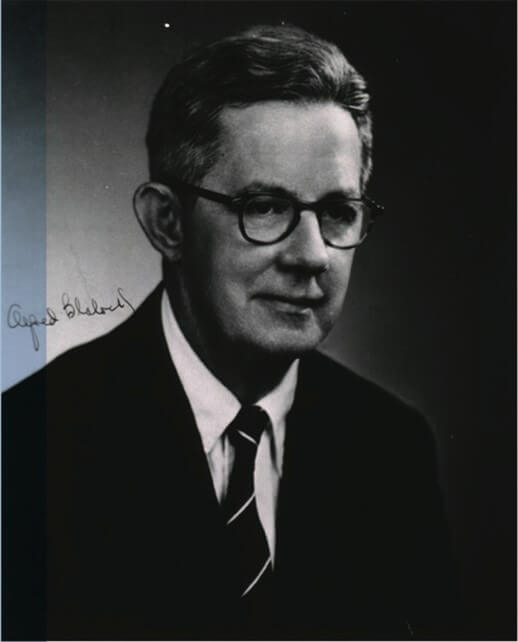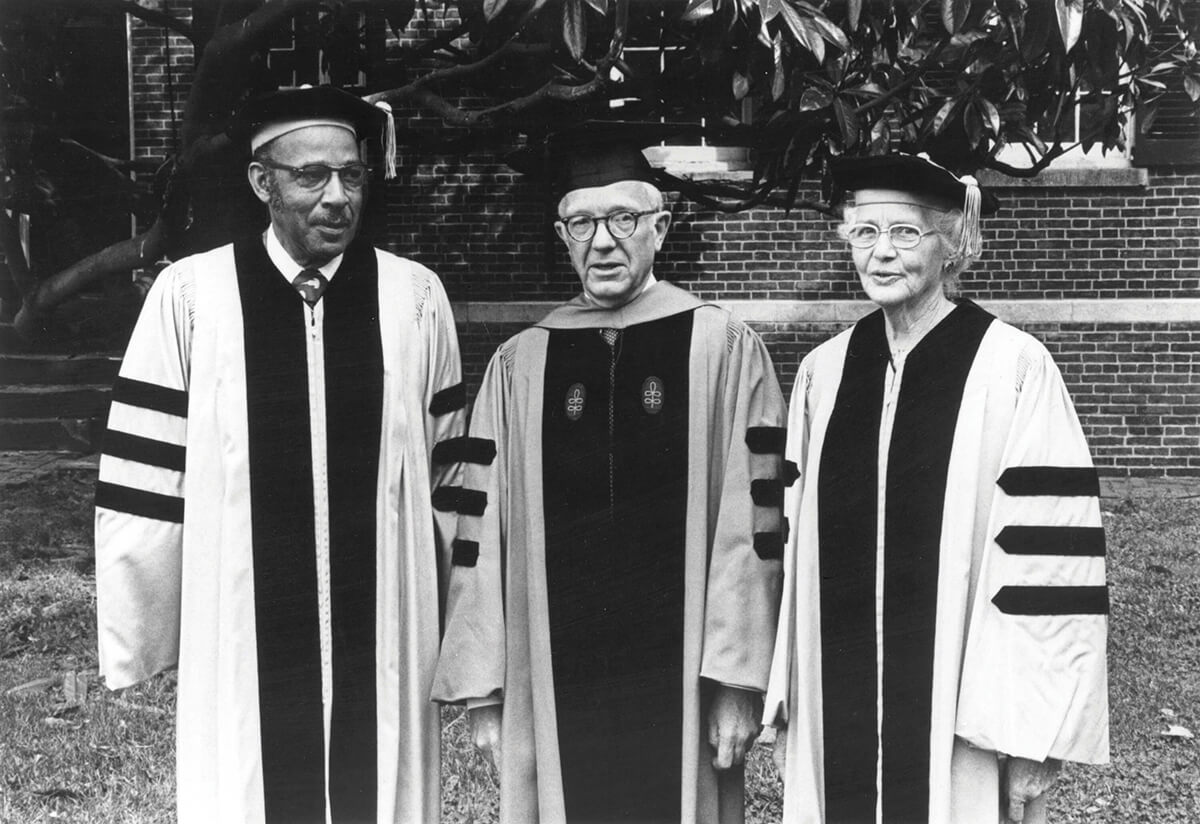Our History of Innovation in Cardiac Surgery
The Johns Hopkins Cardiac Surgery Research Lab was founded in 1942 by surgeons Alfred Blalock and Vivien Thomas, who both successfully performed the first “blue baby” operation in 1944. Learn more about our lab’s history and groundbreaking discoveries in surgical treatment for heart conditions.
History of the Laboratory
 Dr. Alfred Blalock, chief of the Department of Surgery at The Johns Hopkins Hospital from 1941-1964.
Dr. Alfred Blalock, chief of the Department of Surgery at The Johns Hopkins Hospital from 1941-1964.Founded in 1942 by surgeon Alfred Blalock and Dr. Vivien Thomas (a surgical technician at the time), the Cardiac Surgery Research Lab at The Johns Hopkins Hospital has a long and productive history. The lab traces its origins back to Dr. Blalock’s days with the development of a surgical procedure now known as the Blalock-Taussig shunt for correction of pulmonary stenosis, or “blue baby syndrome,” in Thomas’ research lab. On Nov. 29, 1944, Dr. Blalock, assisted by surgery chief resident William Longmire and intern Denton Cooley, and with Thomas and pediatric cardiologist Helen Taussig in the room, performed the procedure successfully on a frail infant. This surgery not only went on to save thousands of lives, but it also marked the beginning of a new era in cardiac surgery at The Johns Hopkins Hospital.
The Cardiac Surgery Research Laboratory has set the standard for surgical research today.
Areas of research include:
 The first “blue baby” operation (the Blalock-Taussig-Thomas shunt). Dr. Alfred Blalock is seen to the left of the patient. Assisting him is his then-intern, Denton Cooley. Vivien Thomas is pictured behind Blalock.
The first “blue baby” operation (the Blalock-Taussig-Thomas shunt). Dr. Alfred Blalock is seen to the left of the patient. Assisting him is his then-intern, Denton Cooley. Vivien Thomas is pictured behind Blalock.- Solutions to congenital cardiac defects, i.e., tetralogy of Fallot (blue baby)
- Early advances in cardiopulmonary bypass using the heart-lung machine to facilitate open-heart surgery
- Early prosthetic valve development with related coating and bonding studies
- Early development of the intra-aortic balloon pump
- Comparisons of anti-rejection medications in heart and heart-lung transplantation
- Heart and lung organ preservation techniques
- Effects of leukocyte filtration on cardiopulmonary bypass
- Techniques for safely extending hypothermic circulatory arrest and minimizing neurological injury
- Preventing spinal cord injury during aortic surgery
- Investigating the use of gene therapy to preserve the life of vein grafts
- Robotic cardiac surgery
- Surgical approaches to connective tissue disorders in Marfan syndrome and Loeys-Dietz syndrome
- Multicenter clinical trials of ventricular assist devices for bridge-to-transplant and bridge-to-destination therapy
- Understanding and improving the cardiac surgical care of elderly patients
Learn more about the history of cardiac surgery research at The Johns Hopkins Hospital.
Our Laboratory Facility

The Cardiac Surgery Research Laboratory is located on the 12th floor of the Blalock Building of the Johns Hopkins Hospital. The laboratory space consists of a 515-square-foot operating room, with an adjacent room (222 square feet) used for pre- and post-operative animal care, equipment and supply storage. Two other rooms totaling 190 square feet adjacent to the operating room are used for a surgical scrub area, washing, sterilizing, storage and minor bench-top procedures. This area fully supports all large animal surgery. Adjacent to this large laboratory is another 320-square-foot operating room that is equipped for small animal surgery. Additional resources available to the laboratory are the Johns Hopkins Hospital Clinical engineering department, who repair and maintain operating equipment and hospital facilities and provide maintenance and repair of all laboratory supplies.
Across the hall from the laboratory are three rooms totaling 189 square feet that serve as a laundry room for laboratory materials and office space for two full-time technicians. Adjacent to this is an area of 126 square feet for full-time research fellows. There is an adjacent room for lab meetings.

 From left, Vivien Thomas, Dr. Alfred Blalock and Dr. Helen Taussig.
From left, Vivien Thomas, Dr. Alfred Blalock and Dr. Helen Taussig.
